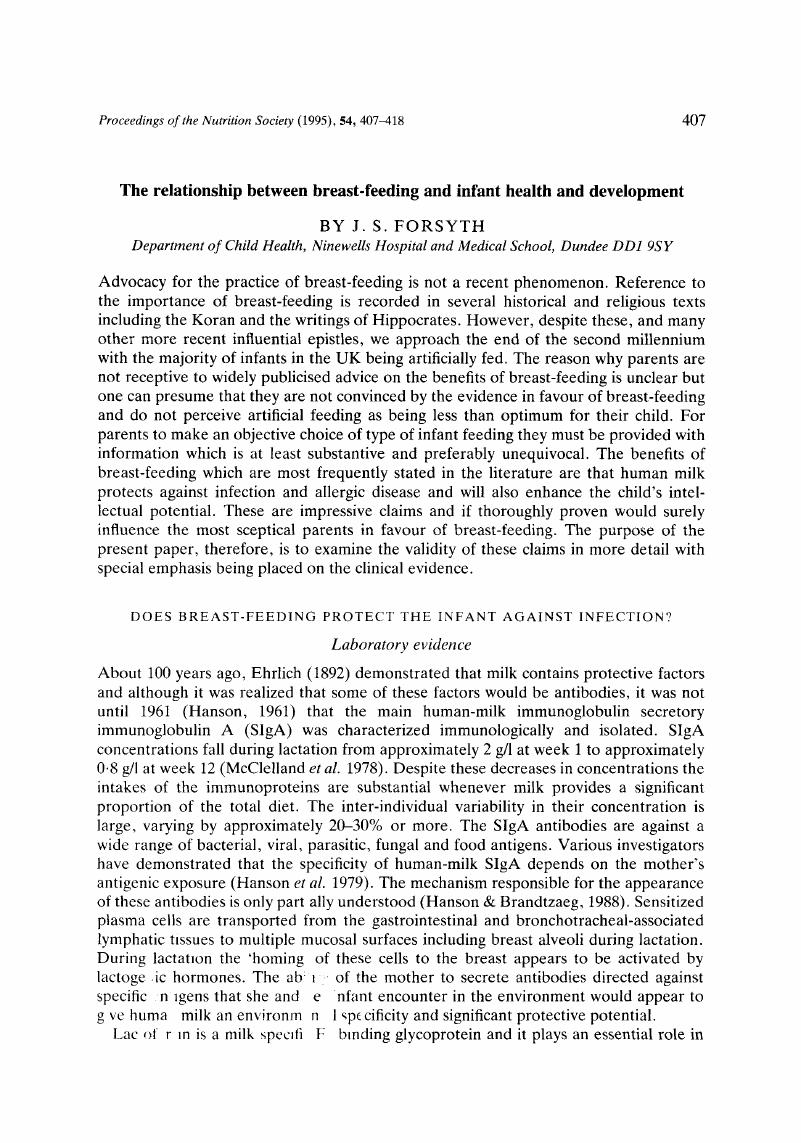Crossref Citations
This article has been cited by the following publications. This list is generated based on data provided by Crossref.
Haug, K
Irgens, LM
Baste, V
Markestad, T
Skjærven, R
and
Schreuder, P
1998.
Secular trends in breastfeeding and parental smoking.
Acta Paediatrica,
Vol. 87,
Issue. 10,
p.
1023.
Parker, J
Beharry, K
Modanlou, H D
Jamal, S
Said, R
and
Aranda, J V
1998.
Effect of Morphine Sulfate (MS) on Nitric Oxide End Products and Nitric Oxide Synthase (NOS) Expression in Newborn Piglet Brain Endothelial Cells † 344.
Pediatric Research,
Vol. 43,
Issue. ,
p.
61.
Peterson, Jerry A
Hamosh, Margit
Scallan, Ciaran D
Ceriani, Roberto L
Henderson, Theresa R
Mehta, Nitin R
Armand, Martine
and
Hamosh, Paul
1998.
Milk Fat Globule Glycoproteins in Human Milk and in Gastric Aspirates of Mother's Milk-Fed Preterm Infants.
Pediatric Research,
Vol. 44,
Issue. 4,
p.
499.
Horwood, L. John
and
Fergusson, David M.
1998.
Breastfeeding and Later Cognitive and Academic Outcomes.
Pediatrics,
Vol. 101,
Issue. 1,
p.
e9.
Lacayo Romero, Martha L.
Dorea, Jose G.
and
Cruz Granja, Adela C.
2000.
Concentrations of Organochlorine Pesticides in Milk of Nicaraguan Mothers.
Archives of Environmental Health: An International Journal,
Vol. 55,
Issue. 4,
p.
274.
Mosley, Chiara
Whittle, Claire
and
Hicks, Carolyn
2001.
A pilot study to assess the viability of a randomised controlled trial of methods of supplementary feeding of breast-fed pre-term babies.
Midwifery,
Vol. 17,
Issue. 2,
p.
150.
Tarrats, R.
Ordoñez, G.
Rios, C.
and
Sotelo, J.
2002.
Varicella, ephemeral breastfeeding and eczema as risk factors for multiple sclerosis in Mexicans.
Acta Neurologica Scandinavica,
Vol. 105,
Issue. 2,
p.
88.
Erdoĝrul, Özlem
Covaci, Adrian
Kurtul, Naciye
and
Schepens, Paul
2004.
Levels of organohalogenated persistent pollutants in human milk from Kahramanmaraş region, Turkey.
Environment International,
Vol. 30,
Issue. 5,
p.
659.
Erkkola, M
Pigg, H-M
Virta-Autio, P
Hekkala, A
Hyppönen, E
Knip, M
and
Virtanen, S M
2005.
Infant feeding patterns in the Finnish type I diabetes prediction and prevention nutrition study cohort.
European Journal of Clinical Nutrition,
Vol. 59,
Issue. 1,
p.
107.
Behrooz, R. Dahmardeh
Sari, A. Esmaili
Bahramifar, N.
and
Ghasempouri, S.M.
2009.
Organochlorine pesticide and polychlorinated biphenyl residues in human milk from the Southern Coast of Caspian Sea, Iran.
Chemosphere,
Vol. 74,
Issue. 7,
p.
931.
Bailey, Beth A.
and
Wright, Heather N.
2011.
Breastfeeding Initiation in a Rural Sample: Predictive Factors and the Role of Smoking.
Journal of Human Lactation,
Vol. 27,
Issue. 1,
p.
33.
Barghi, Mandana
Behrooz, Reza Dahmardeh
Esmaili-Sari, Abbas
and
Ghasempouri, Seyed Mahmoud
2012.
Mercury Exposure Assessment in Iranian Pregnant Women’s Hair with Respect to Diet, Amalgam Filling, and Lactation.
Biological Trace Element Research,
Vol. 148,
Issue. 3,
p.
292.
Giefing-Kröll, Carmen
and
Grubeck-Loebenstein, Beatrix
2019.
The Future of Ageing in Europe.
p.
177.





